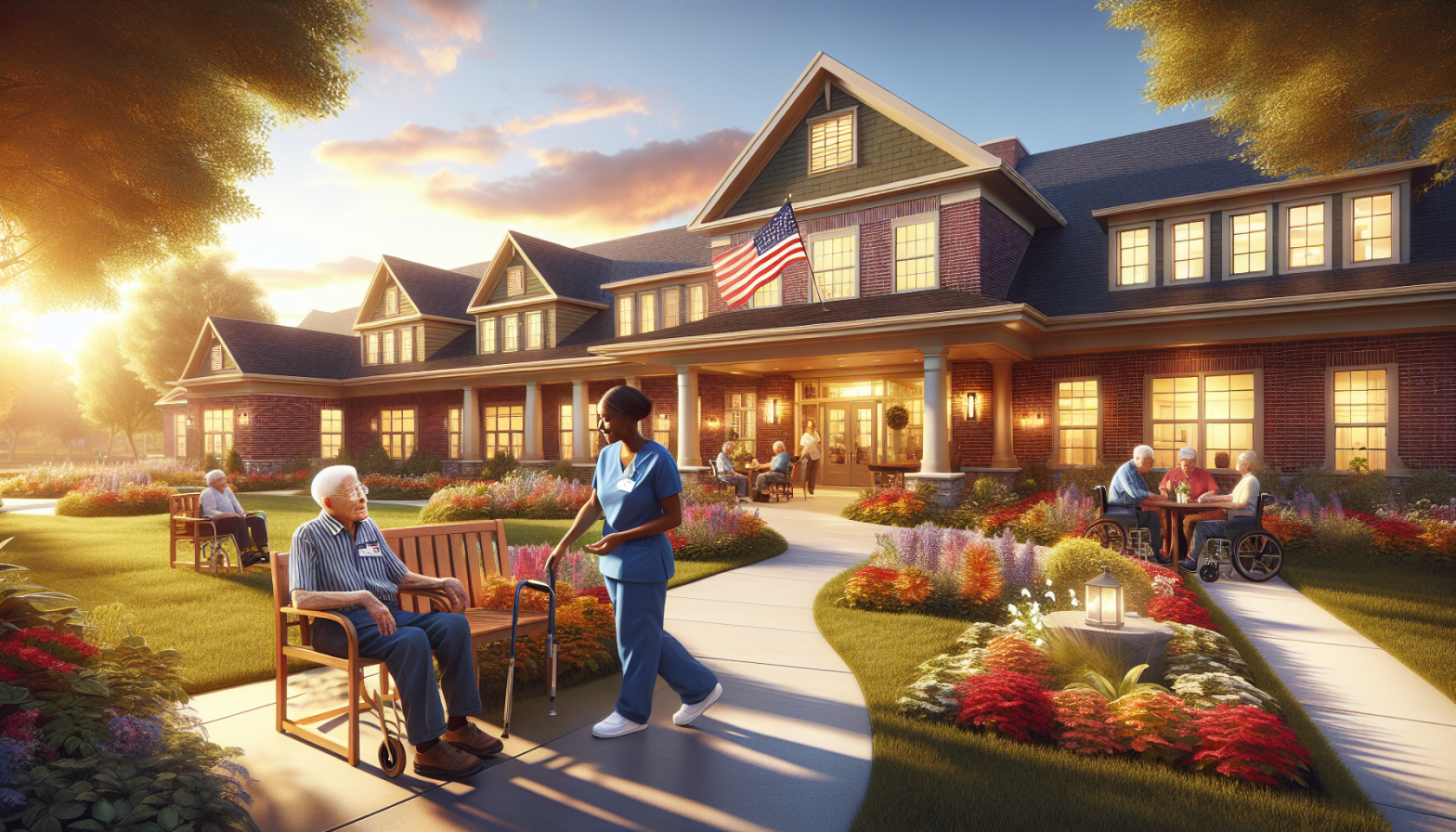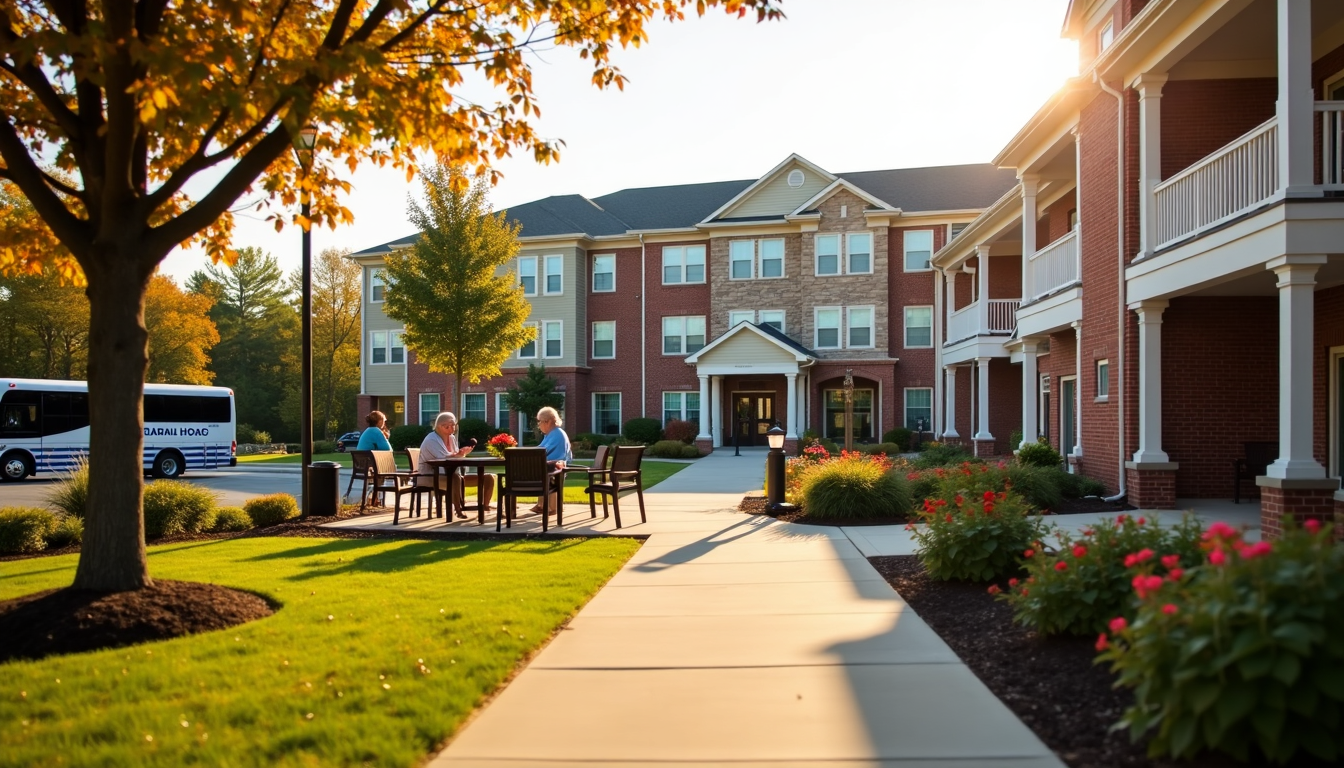As veterans age, finding suitable living arrangements becomes a crucial concern. Veterans Affairs assisted living options offer a lifeline for those who served their country and now require additional support. These programs provide essential care and housing services, ensuring veterans maintain their independence while receiving necessary assistance. Understanding the available VA benefits and eligibility requirements is key to accessing these valuable resources.
This article delves into the various Veterans Affairs assisted living options, focusing on two primary programs: the Aid and Attendance Program and the Veteran Directed Care Program. It explores how VA health care and VA community care integrate with these services, and sheds light on VA pension benefits that can help cover the costs of assisted living. Additionally, it examines the criteria for VA assisted living facilities and outlines the steps veterans can take to apply for and make the most of these crucial support systems.
Overview of VA Assisted Living Benefits
The Department of Veterans Affairs (VA) offers various benefits to support veterans in need of assisted living care. These benefits are designed to help senior and disabled veterans maintain their independence while receiving necessary assistance.
Types of VA Benefits
- Aid & Attendance and Housebound Allowances: These allowances are paid on top of the regular monthly pension and are sometimes referred to as VA assisted living benefits, improved pensions, or veterans elder care benefits.
- Veteran-Directed Home and Community Based Services: This program provides veterans with a flexible budget for services and the ability to hire their own personal care aides.
- VA Health Care Services: The VA offers long-term care services that include 24/7 nursing and medical care, physical therapy, help with daily tasks, comfort care, and support for caregivers.
Eligibility Criteria
To qualify for Aid & Attendance, veterans or survivors must meet at least one of the following conditions:
- Require aid for personal functions such as bathing, feeding, or dressing
- Be bedridden or required to remain in bed except for prescribed treatments
- Be a nursing home patient due to mental or physical incapacity
- Have limited eyesight
For the Veteran-Directed Home and Community Based Services program, eligibility is part of the VHA Standard Medical Benefits Package. Veterans of all ages who served in active military service and were discharged under conditions other than dishonorable are eligible, provided they have the clinical need for the service.
Application Process
To apply for VA benefits:
- Online Application: The best way to file for most benefits is to apply online at va.gov.
- Paper Application: Download and complete the appropriate VA Form for the specific benefit you’re applying for.
- In-Person Application: Visit your local VA regional office for assistance with the application process.
- By Mail: Mail completed forms to the designated VA office or Claims Intake Center.
- By Phone: For some benefits, you can call the VA to request an application be sent to you.
It’s important to note that the application process can take several months, but approved applicants receive retroactive benefits back to the original application date. Veterans and their families can seek assistance from resources such as the California Department of Veterans Affairs (CalVet) or County Veterans Service Offices (CVSOs) for help with the application process and other VA-related services.
Aid and Attendance Program
Program Description
The Aid and Attendance Program is a long-term care enhanced pension offered by the Veterans Administration. This tax-free benefit provides additional monetary support to eligible veterans and survivors who require assistance with daily activities or are housebound. The program aims to help cover the costs of various care options, including home care, adult day care, assisted living, and skilled nursing facility care. Unlike some other benefits, Aid and Attendance does not need to be paid back, making it a valuable resource for veterans and their families.
Qualification Requirements
To qualify for the Aid and Attendance benefit, veterans must meet specific criteria:
- Service Requirements: Veterans must have served during an eligible period of war and received an honorable discharge or anything other than dishonorable.
- Active Duty: For those who entered active duty after September 7, 1980, at least 24 months of service or the full period called to active duty is required, with at least one day during an eligible wartime period.
- Age and Disability: Applicants must be at least 65 years old or totally and permanently disabled if younger. The disability does not have to be service-related.
- Need for Assistance: The veteran or spouse must require help with at least two activities of daily living (ADLs) or need 24/7 supervision due to mental or cognitive impairment.
- Surviving Spouses: The spouse of a deceased veteran may qualify if married to the veteran for at least a year before their death or had a child with the veteran.
Benefit Amount
The Veterans Administration has announced an increase in Aid and Attendance benefit amounts starting January 2024. The exact amount varies based on individual circumstances and needs. This benefit is paid in addition to the monthly pension, providing crucial financial support to help veterans and their families manage the costs associated with long-term care and assistance.
Veteran Directed Care Program
Program Features
The Veteran Directed Care (VDC) program offers veterans of all ages the opportunity to receive Home and Community Based Services in a consumer-directed manner. This program is designed for veterans who require personal care services and assistance with activities of daily living, such as bathing, dressing, or meal preparation. It also caters to veterans who are isolated or whose caregivers are experiencing burden.
A key feature of the VDC program is the flexible budget provided to veterans for services. This budget can be managed by the veteran or their representative. With the help of a counselor, veterans have the authority to hire their own workers to meet their daily needs, enabling them to live independently at home or in their community.
The program allows veterans to:
- Decide on the mix of services that best meets their needs
- Hire personal care aides, which may include family members or neighbors
- Purchase items and services that support independent living
Eligibility Criteria
To be eligible for the Veteran Directed Care program, veterans must meet the following criteria:
- Be enrolled in the VA health care system
- Be eligible for community care
- Meet the clinical criteria for the service
- Live in an area where the program is available
It’s important to note that services may vary by location. Since the VDC program is part of the VHA Standard Medical Benefits Package, all enrolled veterans who meet these criteria are eligible.
How It Supports Assisted Living
While the Veteran Directed Care program is not specifically designed for assisted living facilities, it supports veterans in maintaining independence in their homes or communities. The program provides assistance with various daily activities, including:
- Eating
- Getting dressed
- Personal grooming
- Bathing
- Using the bathroom
- Mobility assistance
- Grocery shopping
By offering these services, the VDC program helps veterans avoid or delay the need for nursing home placement. It allows them to receive a nursing home level of care in their own homes, their caregivers’ homes, or in non-supportive, independent living communities.
The program’s flexibility and focus on consumer choice make it a valuable resource for veterans seeking alternatives to traditional assisted living or nursing home care. It empowers veterans and their families to take control of their care needs while remaining in familiar and comfortable environments.
Conclusion
Veterans Affairs assisted living options play a crucial role in supporting our nation’s heroes as they age. These programs offer a lifeline to veterans, helping them maintain independence while receiving necessary care. The Aid and Attendance Program and Veteran Directed Care Program stand out as key resources, providing financial support and flexible care options to eligible veterans and their families.
To wrap up, understanding and accessing these benefits can have a significant impact on the quality of life for veterans in need of assisted living care. While the application process may take time, the retroactive benefits and ongoing support make it worthwhile to explore. These programs showcase the commitment to honoring those who served by ensuring they receive the care and assistance they deserve in their later years.
FAQs
1. What amount does the VA contribute towards assisted living expenses in Texas for veterans?
Veterans and their spouses who qualify for the Aid and Attendance (A&A) Pension Benefit can use these funds to help cover the costs of assisted living. This benefit can provide up to $1,794 per month for a veteran, $1,153 per month for a surviving spouse, or $2,127 per month for a couple.
2. Are the spouses of veterans eligible to reside in VA nursing homes?
Spouses of U.S. military veterans may be eligible for VA nursing home benefits. The Aid and Attendance pension, a lifetime financial benefit, offers up to $1,318 per month for eligible spouses.
3. Does the VA cover assisted living costs in Florida?
The VA does not directly cover assisted living expenses in Florida. However, it does provide several programs and benefits that can help alleviate some of these costs.
4. How much is the cost of living adjustment for veterans affairs in recent years?
The cost of living adjustment (COLA) for veterans affairs saw an increase of 5.9% in 2022 and 8.7% in 2023. For 2024, a disabled veteran with a 10% VA rating will see a $6 monthly increase, while those rated at 100%, with no dependents, will receive an additional $116 per month.












